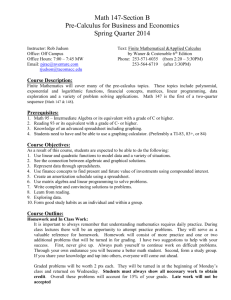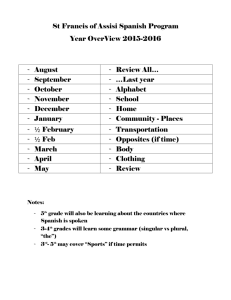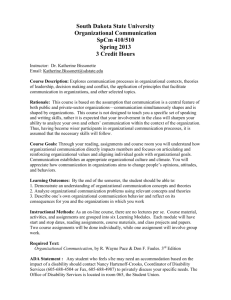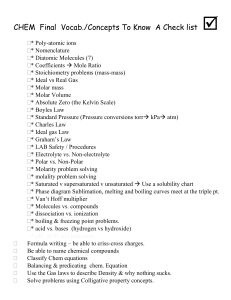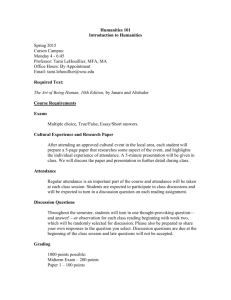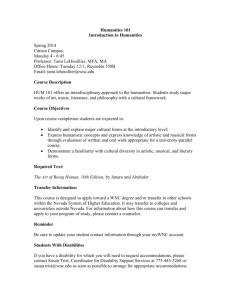Statistics for the Behavioral and Social Sciences
advertisement
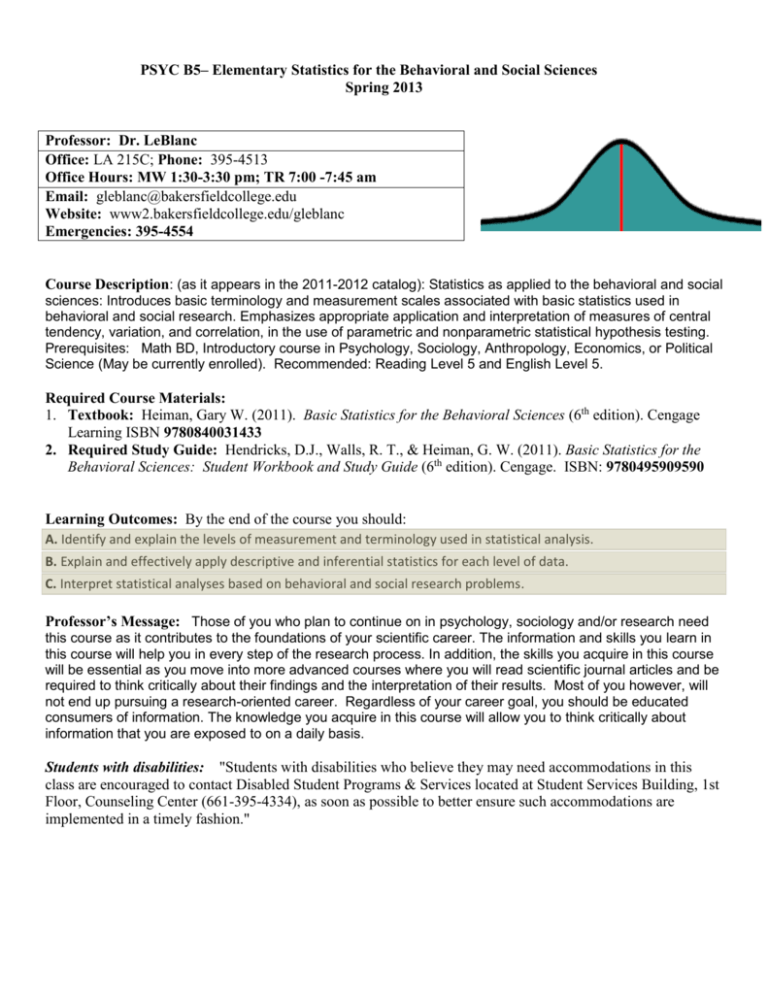
PSYC B5– Elementary Statistics for the Behavioral and Social Sciences Spring 2013 Professor: Dr. LeBlanc Office: LA 215C; Phone: 395-4513 Office Hours: MW 1:30-3:30 pm; TR 7:00 -7:45 am Email: gleblanc@bakersfieldcollege.edu Website: www2.bakersfieldcollege.edu/gleblanc Emergencies: 395-4554 Course Description: (as it appears in the 2011-2012 catalog): Statistics as applied to the behavioral and social sciences: Introduces basic terminology and measurement scales associated with basic statistics used in behavioral and social research. Emphasizes appropriate application and interpretation of measures of central tendency, variation, and correlation, in the use of parametric and nonparametric statistical hypothesis testing. Prerequisites: Math BD, Introductory course in Psychology, Sociology, Anthropology, Economics, or Political Science (May be currently enrolled). Recommended: Reading Level 5 and English Level 5. Required Course Materials: 1. Textbook: Heiman, Gary W. (2011). Basic Statistics for the Behavioral Sciences (6th edition). Cengage Learning ISBN 9780840031433 2. Required Study Guide: Hendricks, D.J., Walls, R. T., & Heiman, G. W. (2011). Basic Statistics for the Behavioral Sciences: Student Workbook and Study Guide (6th edition). Cengage. ISBN: 9780495909590 Learning Outcomes: By the end of the course you should: A. Identify and explain the levels of measurement and terminology used in statistical analysis. B. Explain and effectively apply descriptive and inferential statistics for each level of data. C. Interpret statistical analyses based on behavioral and social research problems. Professor’s Message: Those of you who plan to continue on in psychology, sociology and/or research need this course as it contributes to the foundations of your scientific career. The information and skills you learn in this course will help you in every step of the research process. In addition, the skills you acquire in this course will be essential as you move into more advanced courses where you will read scientific journal articles and be required to think critically about their findings and the interpretation of their results. Most of you however, will not end up pursuing a research-oriented career. Regardless of your career goal, you should be educated consumers of information. The knowledge you acquire in this course will allow you to think critically about information that you are exposed to on a daily basis. Students with disabilities: "Students with disabilities who believe they may need accommodations in this class are encouraged to contact Disabled Student Programs & Services located at Student Services Building, 1st Floor, Counseling Center (661-395-4334), as soon as possible to better ensure such accommodations are implemented in a timely fashion." Responsibilities: 1. “Early is on-time, on-time is late.” Questions? 2. It is your responsibility to attend every class. The information in this class builds directly upon previous topics. Thus, you will not be able to do well in this course if you miss lectures. 3. Be actively involved in the class. This means listening to lectures, asking questions, participating in discussions, and thinking about how the information applies to examples in the real-world. 4. Test yourself regularly. Do not wait until the end of the chapter or the end of the week to check your knowledge. After each class work some of the end-of-chapter problems, paying particular attention to lecture concepts and learning exercises. Be sure you can define and explain key concepts discussed in class. If you are having trouble, get your questions answered immediately or schedule an appointment with the instructor. 5. Form small study groups to discuss and practice information covered in class. 6. Apply the information discussed in class to real world examples (e.g. newspapers, news). 7. Take notes on information that is unclear or not well understood. Bring these questions to class for explanations. Assessment (Grading) Tools: Components Final Exam Exams (5 @ 100 pts. ea.) Quizzes Homework assignments Cooperative learning exercises Total Points 100 400 40 65 50 655 Grade Scale A = 90 - 100 % B = 89 - 80 % C = 79 – 70 % D = 69 – 60 % F = 59 – 0 % Specific Course Components: Exams (Scantrons Needed: Apperson DataLink 1200): There will be five unit exams throughout the semester and one comprehensive final at the end. Your lowest unit exam score will be dropped prior to final grade calculation. The exams will be based on information covered in class and in the text. You will be allowed to use a calculator during the exams. You must, however, show all your work for credit. There are no make-ups exams as I allow a low exam score to be dropped prior to the final course grade being calculated. Quizzes. There will be random quizzes administered at the beginning of class throughout the semester. Each quiz is worth five points and will be based on any information covered in class or assigned the day prior. If you arrive late or miss class you will not be allowed to take the quiz and will receive a zero. There will be no late or make-up quizzes given, so please do not ask. Homework Assignments. All assignments will be based on information covered in lecture and in the textbook. Specifically, the homework will consist of completing the work in the required student workbook. Each component of every chapter in the workbook must be completed for full credit (5 points per chapter). Partial credit will not be given. Workbooks will be due on the day of the exam. No late work will be excepted. Cooperative Learning Exercises. Throughout the course you will be assigned to work within a small group of your peers. Each group will be required to solve a problem using the information acquired in class. Each individual within the group will then be assigned to accomplish a particular learning objective that will help the group solve the larger problem. More details will be given at a later date. Academic Honesty: Cheating and plagiarism on any exam or paper will result in a failing grade. Plagiarism is defined as any case where one person tries to take credit for the ideas or work of another. Cheating also includes copying answers from someone else’s exam. Please see the instructor if you are unclear about what constitutes plagiarism. Tentative Schedule (The professor reserves the right to make changes in the schedule) Date Topic Reading Week 1 Introduction to Statistics Chap. 1 Research Process Chap. 2 Week 2 Frequency Distribution Chap. 3 Week 3 Exam 1 Measures of Central Tendency Chap. 4 Week 4 Measures of Variation Chap. 5 Measures of Variation Chap. 5 Week 5 Z-Scores Chap. 6 Week 6 Exam 2 Probability and Samples Chap. 9 Week 7 Hypothesis Testing Chap. 10 Introduction to the t-Test Chap. 11 Week 8 Introduction to the t-Test Chap. 11 Exam 3 Week 9 Week 10 Week 11 Week 12 Week 13 Week 14 Week 15 Week 16 t-Test Two Independent Samples t-Test Two Related Samples ANOVA ANOVA Exam 4 Correlation Correlation and Regression Chi Square & Nonparametrics Exam 5 Review for Final Exam Final Exams Chap.12 Chap. 12 Chap. 13 Chap. 13 Chap. 7 Chap. 8 Chap. 15 All Material
